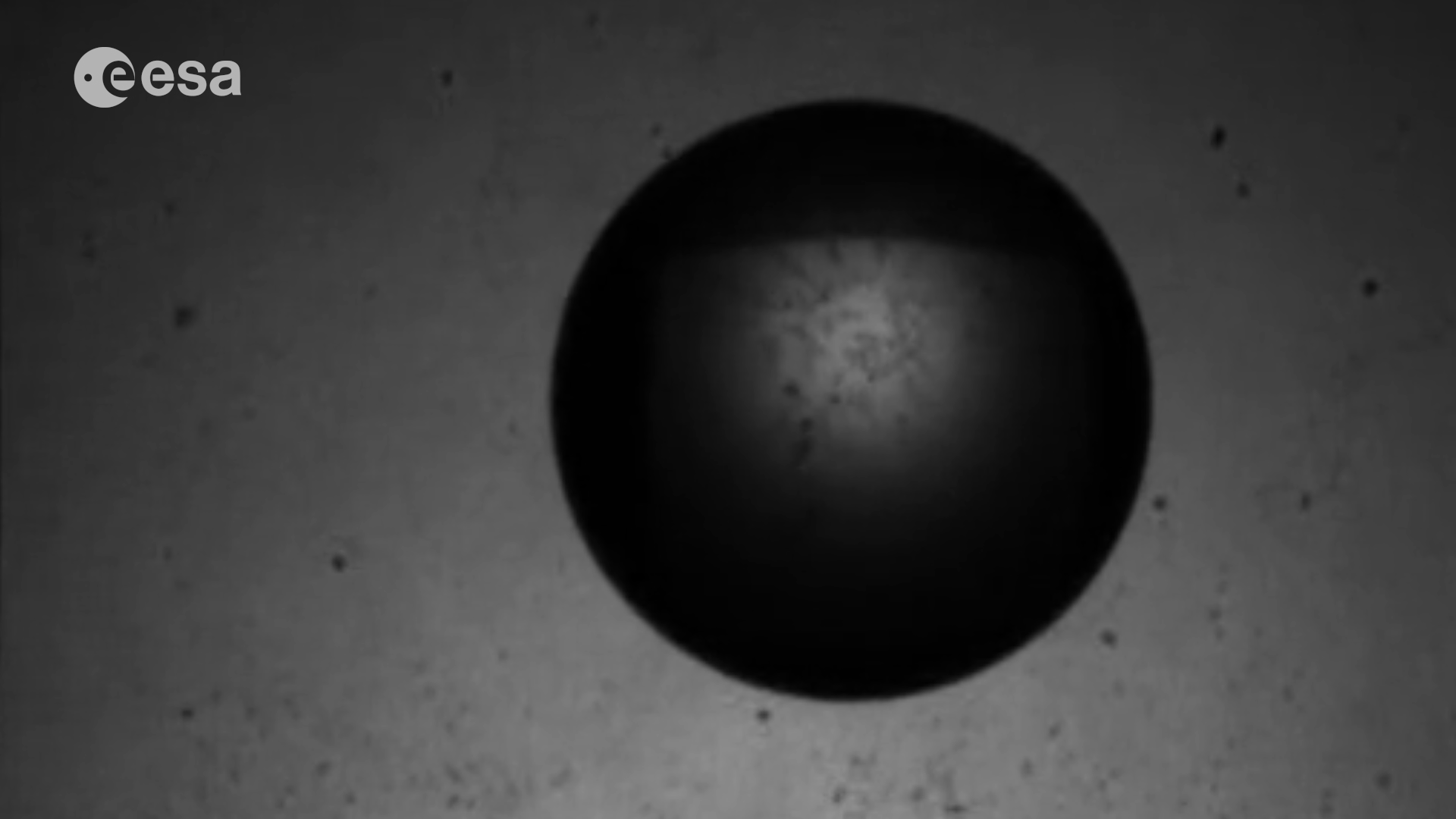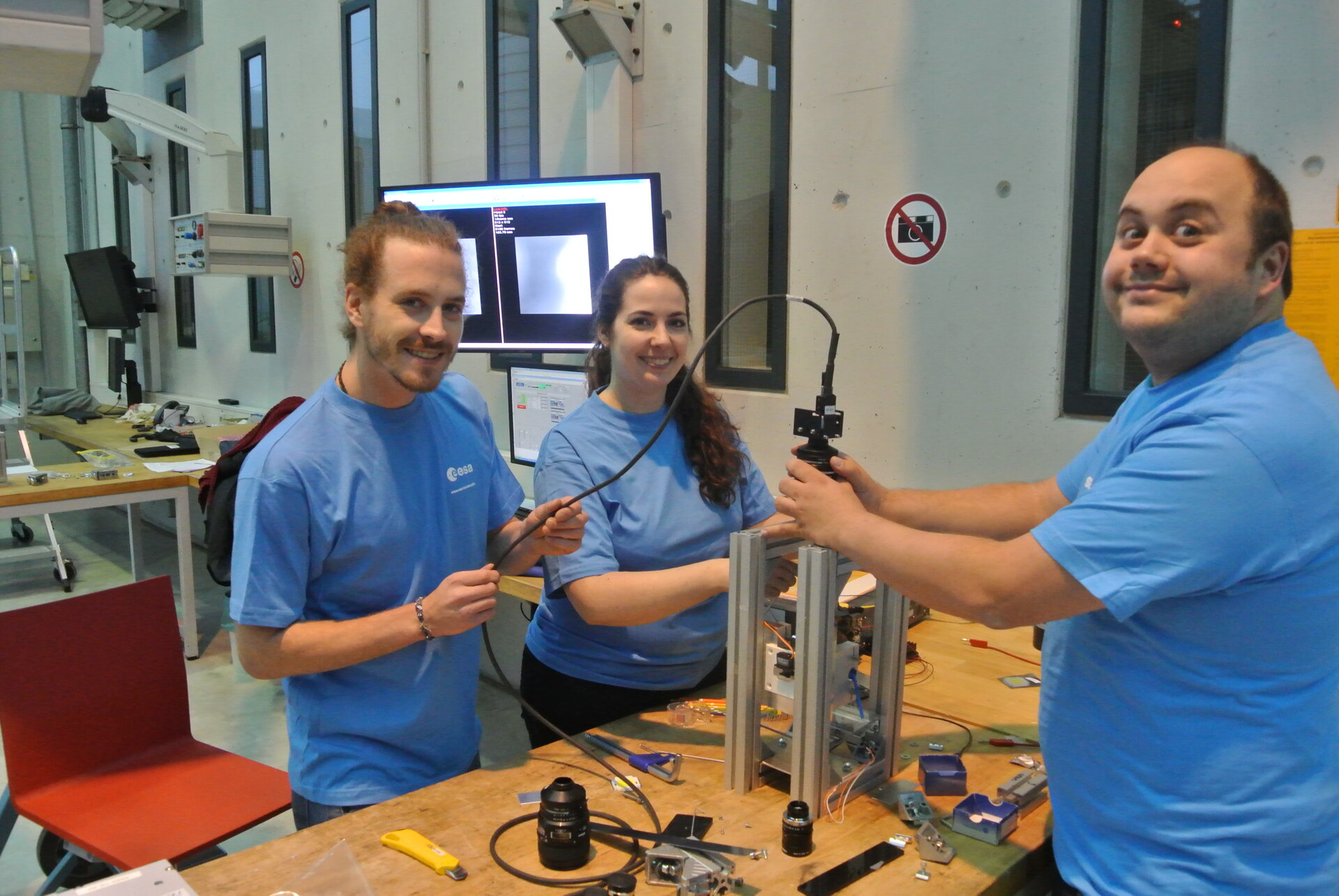Absorbed in Drop Your Thesis! imbibition data
During the past two weeks, ESA’s Education Office enabled university students from Germany to access the highest quality microgravity platform in Europe through the Drop Your Thesis! programme (DYT!). This year, which is the seventh for this Education programme, a team from Friedrich-Alexander University Erlangen-Nürnberg in Germany calling themselves ‘Dropping Drops’ was selected from a pool of applicants to use the world-class Drop Tower facilities in Bremen.
ZARM Drop Tower in Bremen
Encased within a majestic concrete outer shell, the 123-metre tall and 3 metre wide self-standing air-tight steel tube is protected from environmental factors. Before each experiment, powerful vacuum pumps draw the air out from the tube for 90 minutes to reach 20Pa, 1/5000th the normal atmospheric pressure. This enables the experiment to fall with very little air drag, providing extremely high levels of microgravity, up to 10-6g, much like Commander Scott demonstrated on the lunar surface in 1971 with the famous falcon feather and hammer demonstration, where the feather fell as fast as the steel hammer!
Preparation for short flight time

Whilst the quality of the microgravity may be extreme, its duration is seemingly short: flight time is 4,7 seconds. This length of time is enough for most experiments, and the Dropping Drops team capitalised on this time with the help of high speed cameras that get 32 000 data points per drop. They devised an ingenious way to generate perfect spherical drops of water (approximately 1.5cm in diameter) at the initiation of the experiment and observed the imbibition of this volume on varying porous surfaces over the period of 4 seconds.
In order to finalise the experiment for the Drop Tower, students spent one week doing the capsule integration and testing of their setups. As in most complex projects, the road to experiment integration was fraught with some engineering and electronic setbacks. However, with the help of supporting engineering staff on site and some long nights, these problems were circumvented and experiments were considered successful. “It was wonderful to work with such professional people. The ZARM technicians made the entire experience run smoothly for us”, said Laura Steub, the Dropping Drops team leader.
International interest
The Dropping Drops team was in contact with labs in Cornell University, NY, USA, and Centrale Supélec in Paris whilst developing this experiment. Students and professors from these universities came to visit the Dropping Drops team and ZARM facilities, and witnessed the experiment drops, demonstrating that this platform is perceived as a tremendous asset to scientists across the world.
Pouring over porous data

Dropping Drops investigated the physical processes happening during the wetting of porous surfaces. Understanding and properly modelling this phenomenon is crucial to any application where the three states of matter coexist, for example in fuel cells, filtration techniques, CO2 sequestration, heat pipes, or the wetting of soils. The performance of these systems depends strongly on the capillary forces and the geometrical constraints of the system. Investigating these forces in high quality microgravity will lead to better understanding of the phenomena.
“We were so excited when we saw the perfect drops we created. Now we have to do a detailed analysis of the imbibition we observed”, said Jonathan Kollmer, the Dropping Drops supervisor.
The value of Drop Your Thesis!
Drop Your Thesis! is a recurring programme that ESA Education sponsors on a yearly basis. During the DYT! programme, students not only have access to state-of-the-art research facilities, they also receive valuable feedback from ESA, ZARM, and European Low Gravity Research Association (ELGRA) experts. The programme enables participants to develop important practical skills through hands-on activities, as well as learn about project management, problem solving, development, and testing of hardware and software.
As a direct consequence of the research they conducted during the DYT! campaigns, students have been able to present their results at international conferences and/or publish papers in leading scientific journals. DYT! also provides opportunities to meet experts and work with them. The experience gained is an important addition to students’ curriculum vitae, and increases their chance of being elected for future professional opportunities.
An opportunity for the next DYT! campaign is open until 17 December 2015. For inspiration and previous experiments performed in the Drop Tower platform, please see the Previous Experiments and Erasmus Experiment Archive (EEA) links to the right of the page.


Access the video




